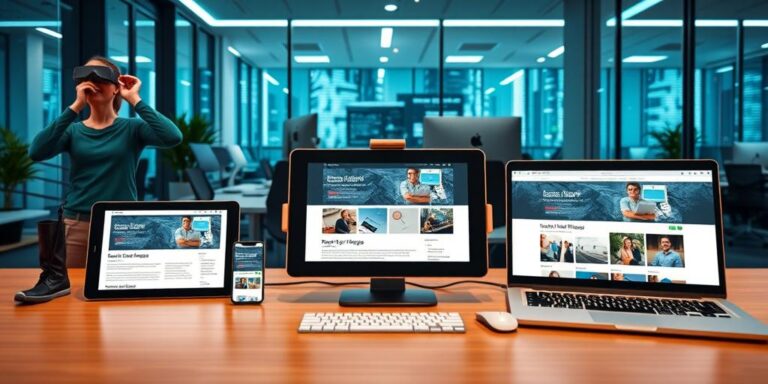Cross-Device Experiences: Seamless Transitions Between Gadgets (2026)
In 2026, the concept of a single device dominating our digital lives is as antiquated as dial-up internet. We’re living in a multi-device ecosystem where smartphones, tablets, laptops, smartwatches, and even augmented reality (AR) glasses coexist. The key to a productive and enjoyable user experience lies in the seamless transition between these gadgets.
The Rise of the Multi-Device User
Today’s users aren’t tethered to a single device. They might start a task on their smartphone during their commute, continue it on a tablet at home, and finalize it on a laptop at the office. This fluid workflow demands that applications and services adapt to provide a consistent and uninterrupted experience across different platforms.
Key Technologies Enabling Seamless Transitions
Several technological advancements are making cross-device experiences a reality:
- Cloud Computing: Cloud services provide the backbone for data synchronization and application streaming. Users can access their files, settings, and applications from any device with an internet connection.
- Advanced APIs and SDKs: Software developers are leveraging sophisticated APIs and SDKs to build applications that can adapt to different screen sizes, input methods, and device capabilities.
- Context-Aware Computing: Devices are becoming increasingly aware of their environment and the user’s context. This allows them to proactively offer relevant information and services based on location, time, and activity.
- 5G and Wi-Fi 6E: High-speed wireless connectivity is crucial for seamless transitions, enabling low-latency data transfer and application streaming.
Use Cases for Cross-Device Experiences
The benefits of seamless cross-device experiences are evident in various scenarios:
- Productivity: Start writing an email on your phone and finish it on your laptop without missing a beat. Collaborative documents are continuously synced, ensuring everyone has the latest version regardless of the device they’re using.
- Entertainment: Begin watching a movie on your smart TV and resume playback on your tablet during a flight. Games seamlessly transfer progress between devices, allowing users to continue their adventure wherever they go.
- Communication: Receive a phone call on your smartwatch and seamlessly transfer it to your AR glasses for a hands-free conversation. Messaging apps synchronize across all devices, ensuring you never miss an important message.
- Education: Students can start researching a topic on their laptop and continue reading on their tablet during their commute. Interactive learning platforms adapt to different screen sizes and input methods, providing a consistent learning experience.
Challenges and Considerations
While the potential of cross-device experiences is immense, several challenges need to be addressed:
- Security: Ensuring data security and privacy across multiple devices is paramount. Robust authentication mechanisms and encryption protocols are essential.
- User Interface Consistency: Maintaining a consistent user interface across different devices can be challenging due to varying screen sizes and input methods. Developers need to carefully design interfaces that are intuitive and easy to use on all platforms.
- Battery Life: Power consumption is a significant concern, especially for mobile devices. Optimizing applications and services to minimize battery drain is crucial for a seamless user experience.
- Network Connectivity: Reliable and high-speed network connectivity is essential for seamless transitions. Users may experience interruptions if they move between areas with different network coverage.
The Future of Cross-Device Experiences
In the coming years, we can expect to see even more sophisticated cross-device experiences. Augmented reality (AR) and virtual reality (VR) technologies will play an increasingly important role, blurring the lines between the physical and digital worlds. Artificial intelligence (AI) will personalize user experiences based on their device usage patterns and preferences. As devices become more interconnected and intelligent, the transition between them will become even more seamless and intuitive.
Cross-device experiences are poised to revolutionize how we interact with technology. By embracing these advancements, we can unlock new levels of productivity, entertainment, and communication in our increasingly connected world.




